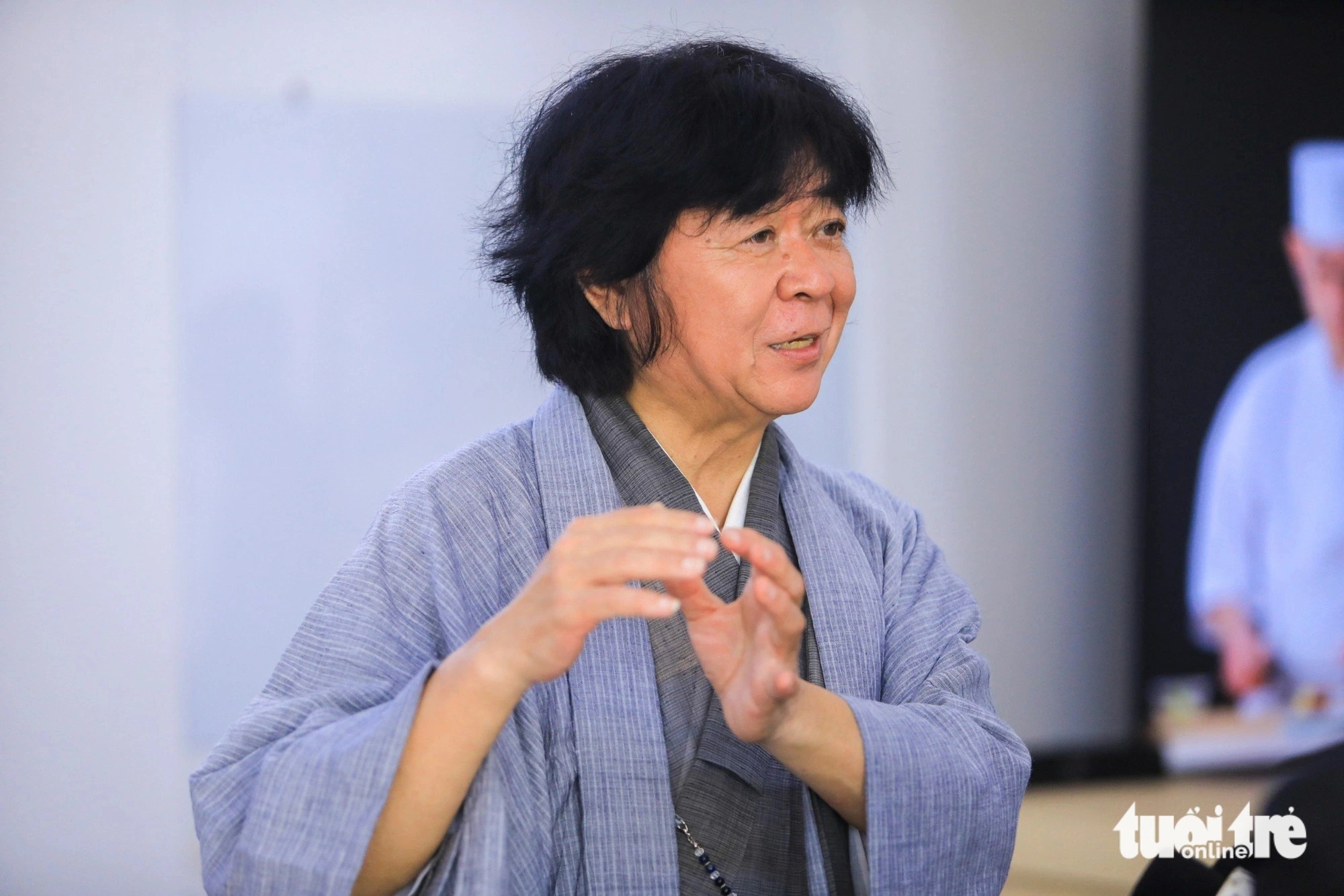With 35 years of expertise in sushi research, Professor Hibino Terutoshi from the University of Aichi Shukutoku in Japan's Aichi prefecture, stands as one of the world’s foremost sushi experts.
For his latest endeavor, Terutoshi has returned to Vietnam as the curator of the "I Love Sushi" exhibition hosted by the Japanese Embassy in Vietnam and open to the public until Sunday.
During an engaging talk show at the Japan Foundation Center for Cultural Exchange in Hanoi on April 21, Terutoshi raised an intriguing question: Could Vietnam be the birthplace of an ancient form of sushi - the Japanese signature dish?
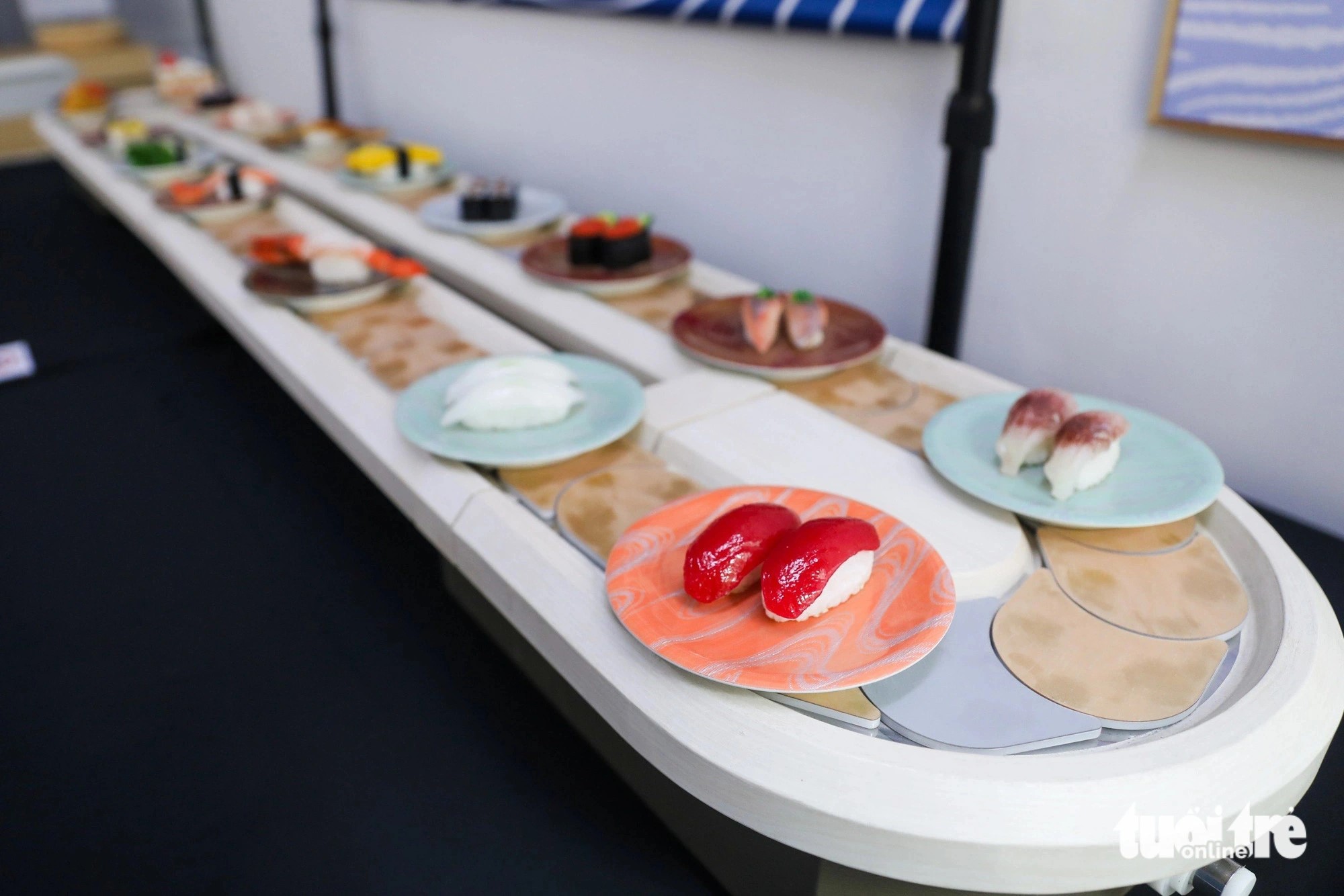 |
| Sushi has evolved into numerous variants over time. Photo: Danh Khang / Tuoi Tre |
Referring to ancient Japanese records dating back to the 8th century, Terutoshi noted that sushi was indeed suggested as having made its way from China to Japan over a millennium ago.
Among these records lies a Chinese document from 2,000 years ago which hints that the dish may have originated in the Mekong River basin.
To delve deeper into this hypothesis, Terutoshi has taken field trips to Cambodia and southern Vietnam. There, he encountered dishes reminiscent of ancient sushi, such as "Mắm bò hóc" in Tra Vinh Province, where cooked rice is fermented with fish - a practice similar to the ancient preservation methods of sushi.
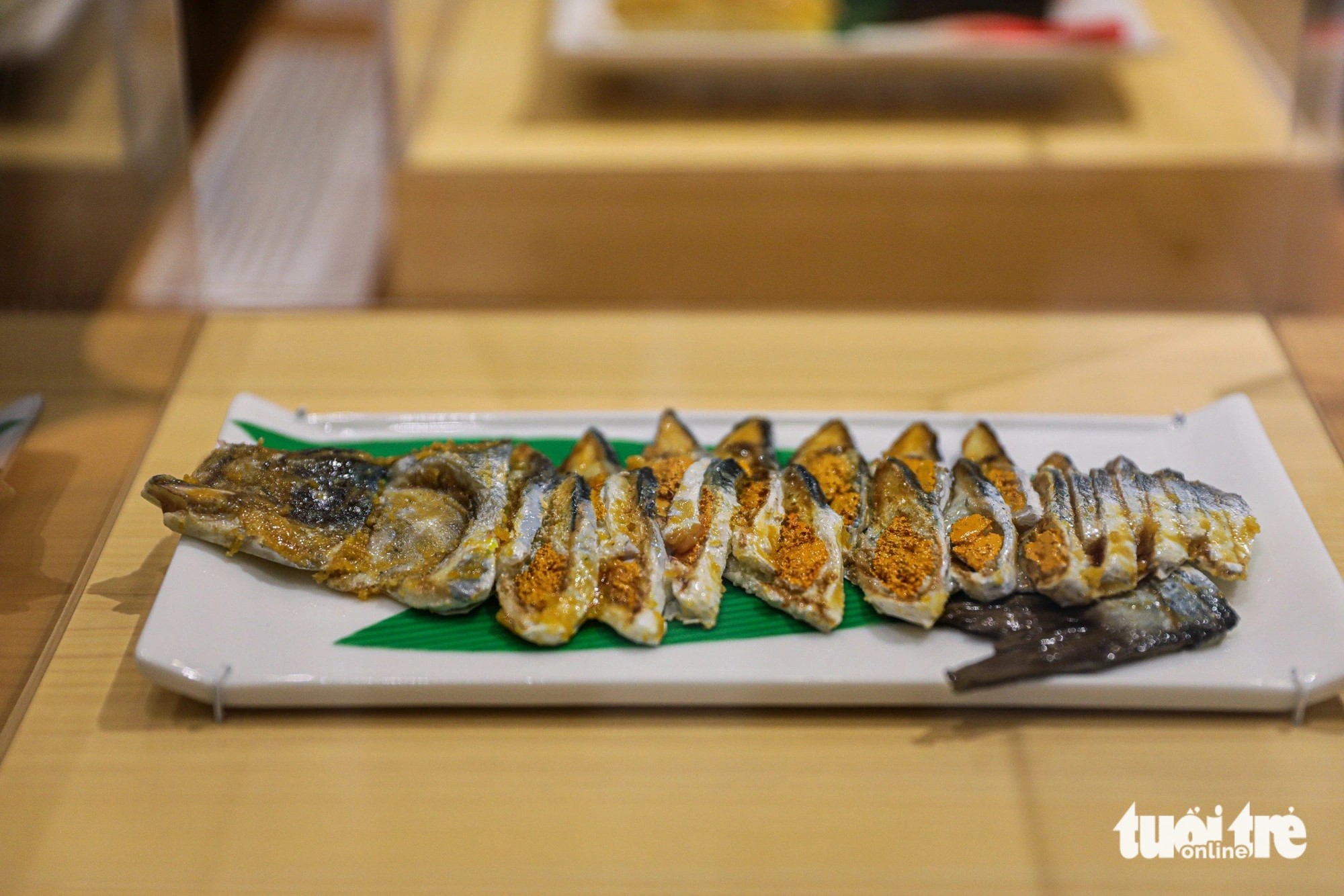 |
| Japanese sushi has transcended national borders, captivating diners worldwide. Photo: Danh Khang / Tuoi Tre |
However, some argue that dishes like "Mắm bò hóc" were introduced to Vietnam by the Khmer from Cambodia, raising doubts about Vietnam's connection to ancient sushi heritage.
Undeterred, Terutoshi has also visited northern mountainous provinces such as Tuyen Quang to discover culinary traditions akin to ancient sushi.
Insights from Vietnamese culinary experts point to regions like Phuoc Son District in central Quang Nam Province, where locals preserve fish through sour fermentation - a practice offering tantalizing clues to sushi's distant origins.
Sushi has been a symbol of traditional Japanese cuisine for over 1,200 years, and understanding its evolution from salted fish and fermented rice to today's vinegar-infused rice is essential to unraveling its enigmatic past.
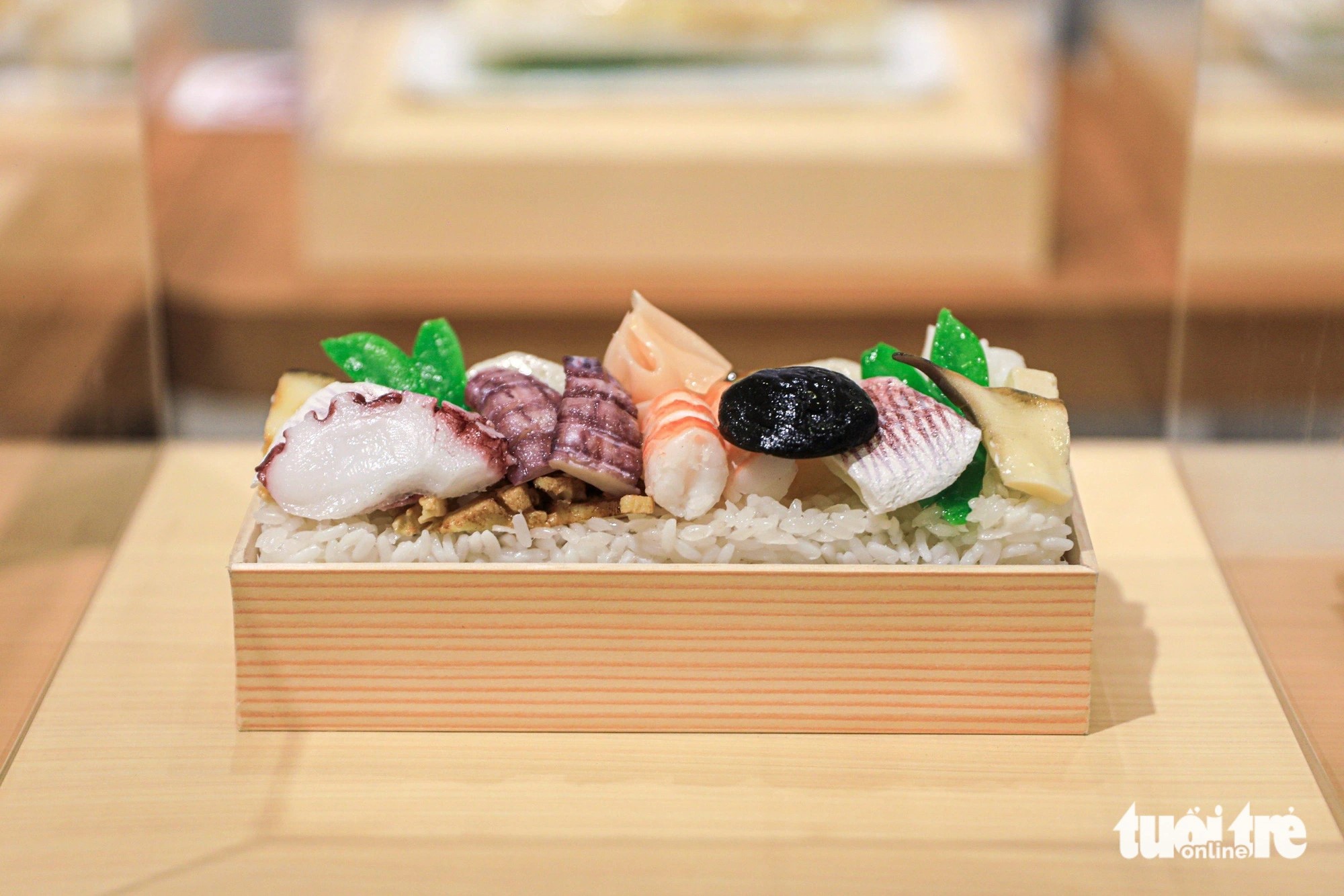 |
| Various hypotheses exist regarding the origin of sushi. Photo: Danh Khang / Tuoi Tre |
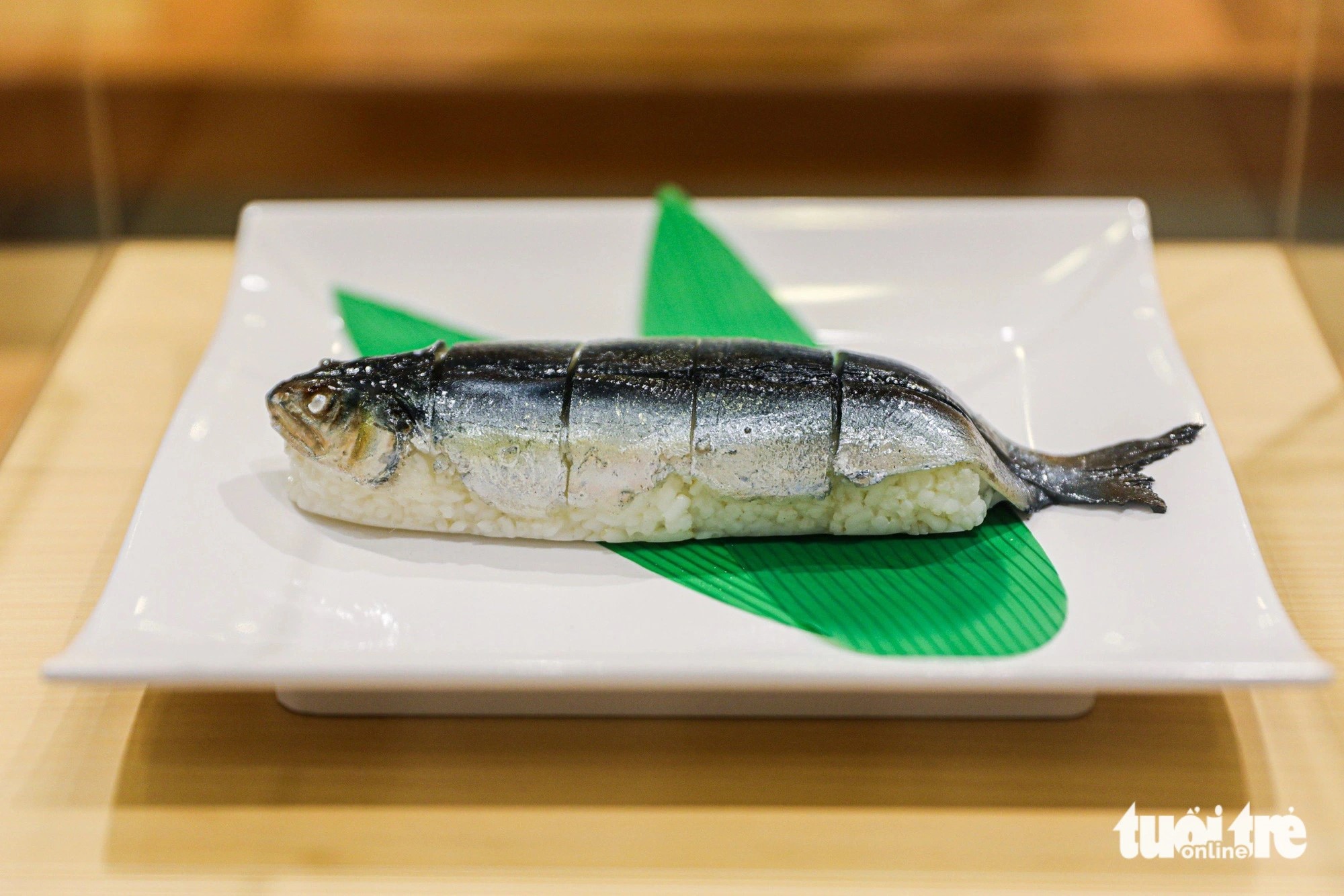 |
| Sushi Sugata-zushi utilizes scented fish, with vinegar-infused white rice to achieve the desired sourness, expediting the fermentation-free production process. Photo: Danh Khang / Tuoi Tre |
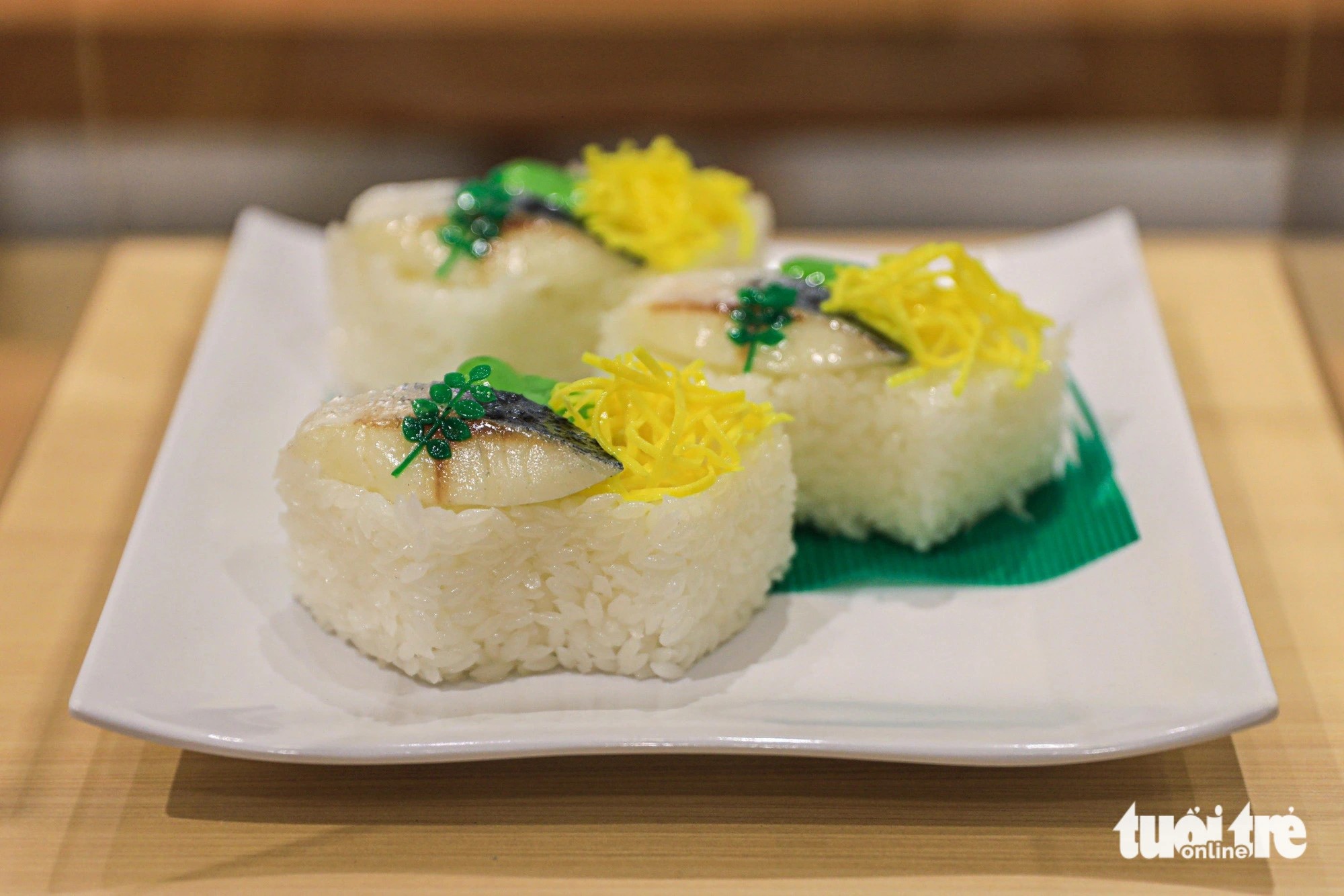 |
| Sushi Oshinuki-zushi comes in various shapes, often made by newly married women to strengthen familial ties by gifting them to their parents-in-law. Photo: Danh Khang / Tuoi Tre |
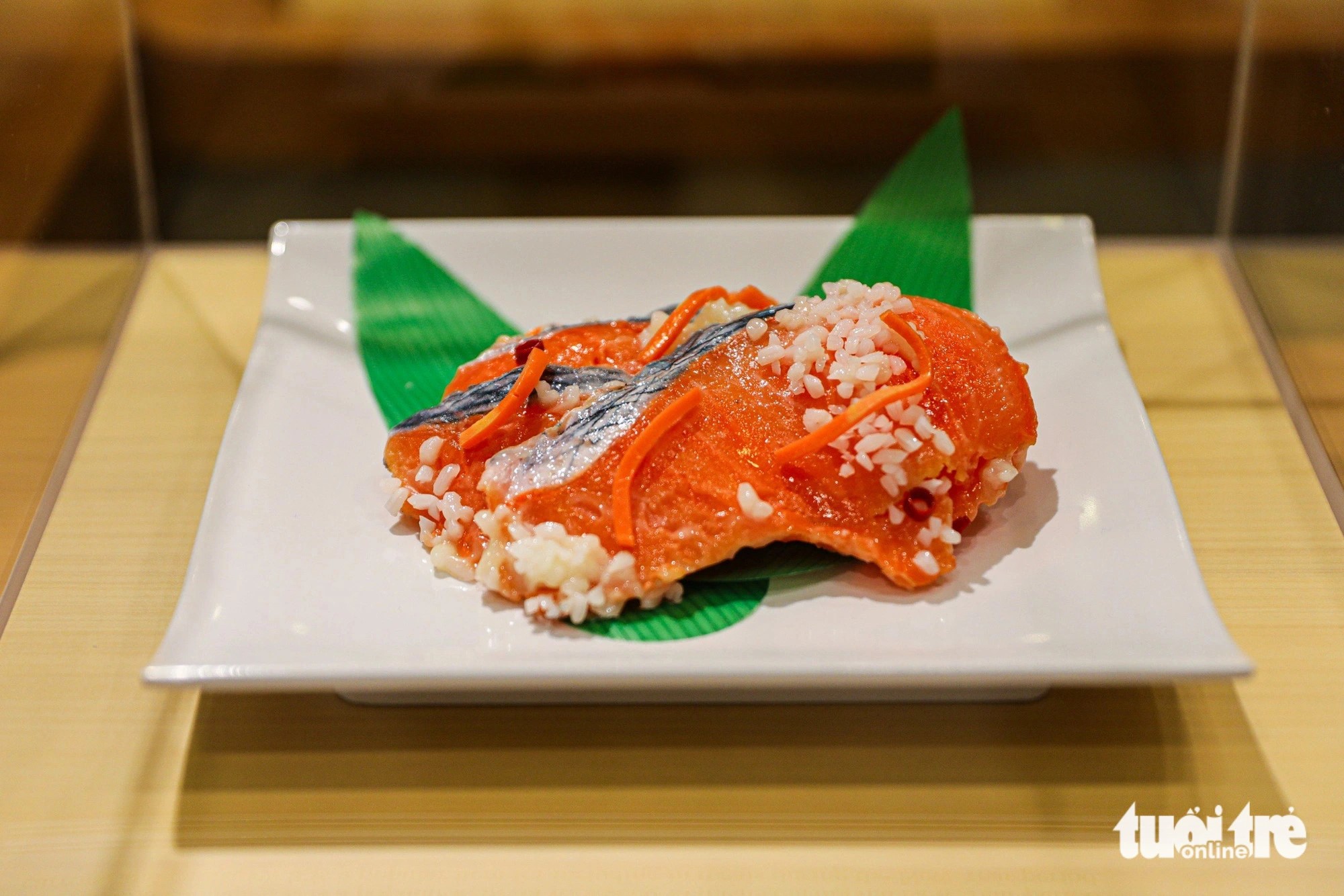 |
| Sushi Izushi, a type of nare-zushi (nama-nare), enjoys immense popularity in Hokkaido, particularly during the New Year. Photo: Danh Khang / Tuoi Tre |
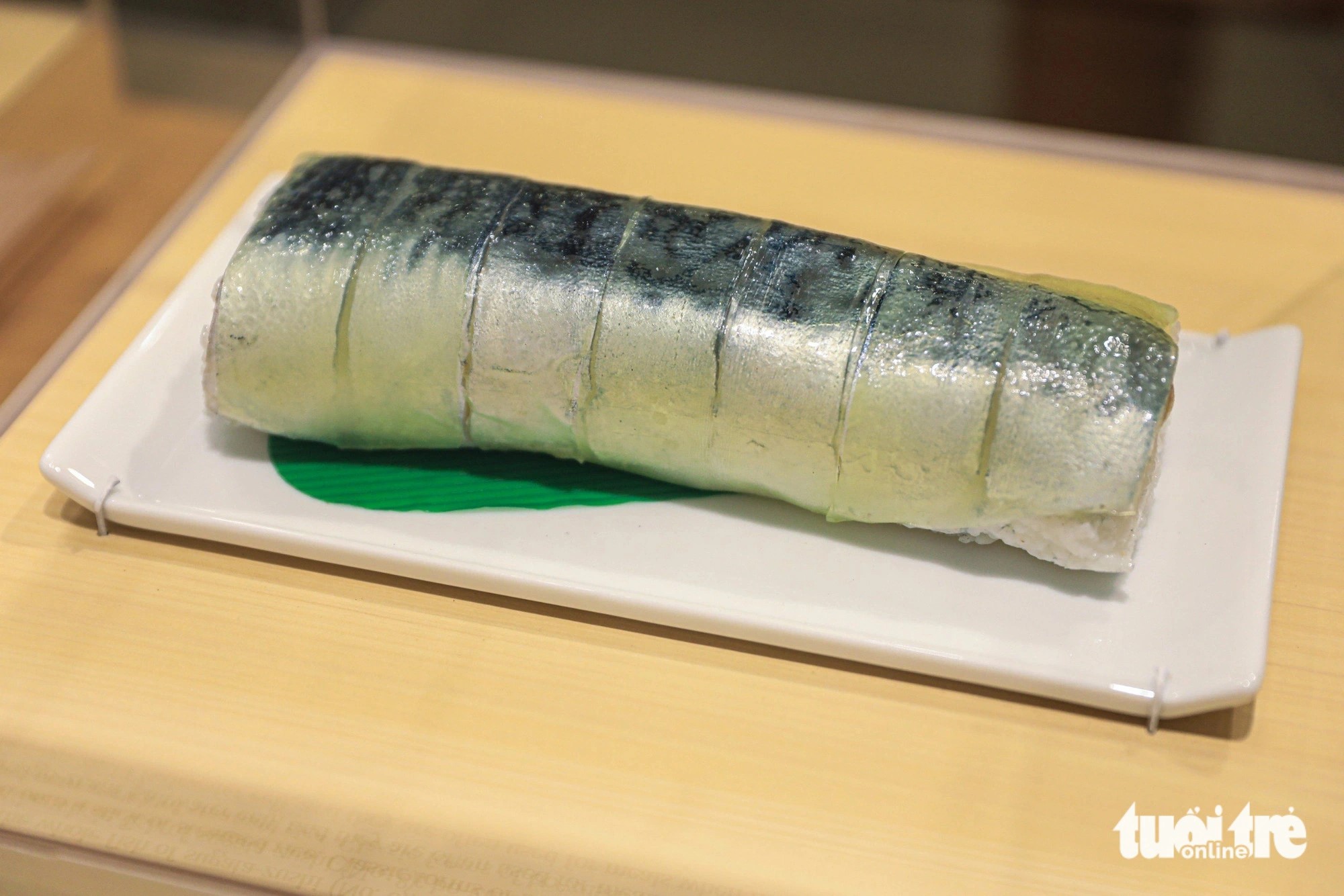 |
| Maki-zushi has emerged as a simple and economical food option, often wrapped in nori seaweed for easy consumption. Photo: Danh Khang / Tuoi Tre |
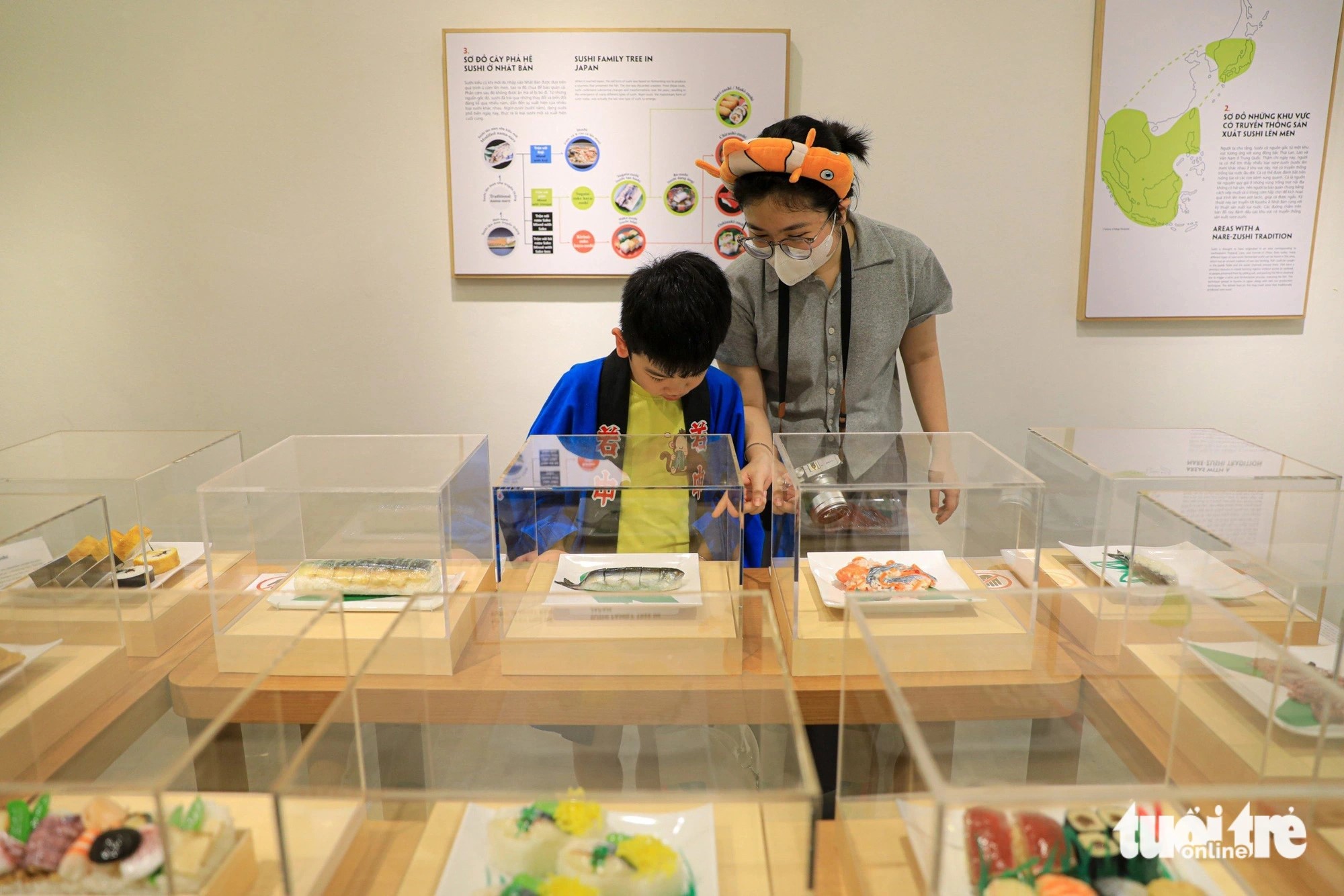 |
| The Japanese sushi exhibition will continue until May 5, 2024. Photo: Danh Khang / Tuoi Tre |
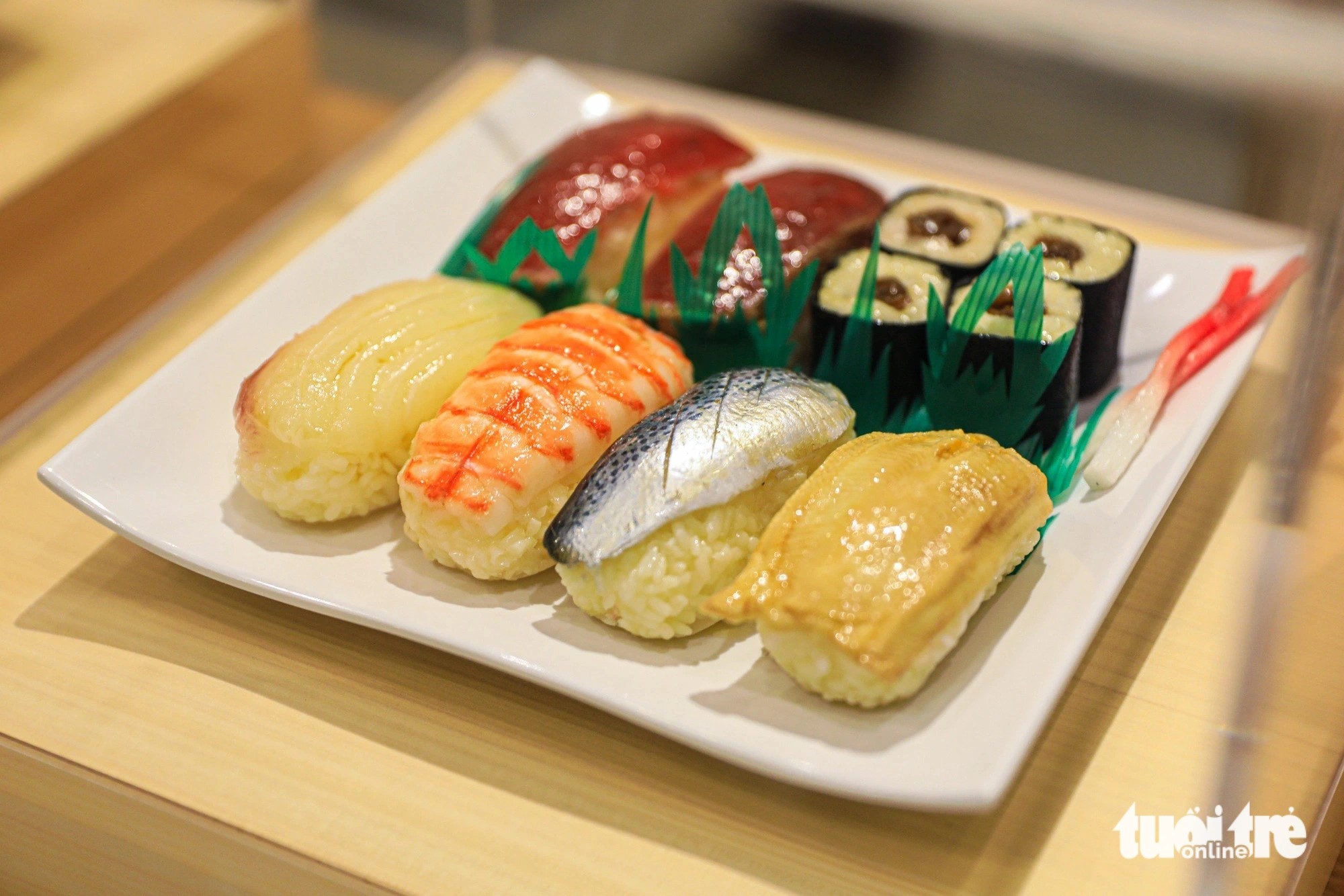 |
| Bo-zushi features sugata-zushi fish fillets without the head and tail, pressed with white rice bars, a favored dish for festivals and commemorative events. Photo: Danh Khang / Tuoi Tre |
Like us on Facebook or follow us on Twitter to get the latest news about Vietnam!



